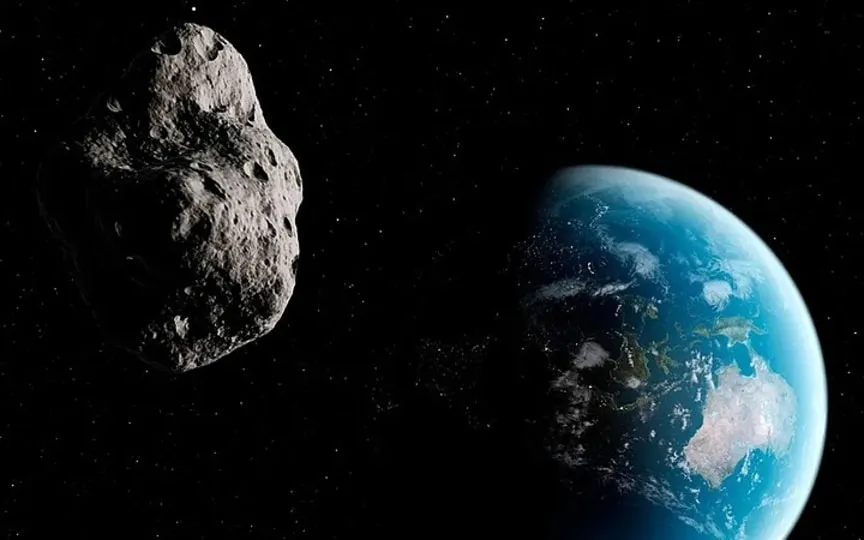Today, NASA announces that a 160-foot asteroid will approach Earth; Discover its velocity, proximity, and additional details.
NASA’s Defense Coordination Office (PDCO), which oversees the monitoring of celestial bodies and Near-Earth Objects (NEOs), has revealed new information about an asteroid that will come close to Earth today, January 15. This asteroid was detected and tracked using NASA’s state-of-the-art instruments, including the NEOWISE telescope, Atacama Large Millimeter/submillimeter Array (ALMA), Pans-STARRS1, and Catalina Sky Survey. Gain insights into the asteroid’s proximity to Earth, including its velocity, dimensions, distance of approach, and other pertinent details.
Asteroid 2015 AK1: Speed, Size, Distance and More
According to NASA’s Center for Near-Earth Object Studies (CNEOS), the space rock has been named Asteroid 2015 AK1. It is expected to pass the Earth at a distance of about 6 million kilometers. It flies at 47,608 kilometers per hour, which is much faster than an Intercontinental Ballistic Missile (ICBM)!
This space rock belongs to Apollo’s group of Near-Earth Asteroids, which are space rocks that pass through the Earth and whose semi-major axes are larger than the Earth’s axis. These asteroids are named after the huge 1862 Apollo asteroid discovered by German astronomer Karl Reinmuth in the 1930s.
According to NASA, asteroid 2015 AK1 has passed the Earth before. It first came close to Earth on March 30, 1900, at a distance of about 23 million kilometers. After today, it is predicted to fly past the planet again on January 4, 2033, at a distance of about 29 million kilometers.
How big is it?
Asteroid 2015 AK1 is nearly the size of an airplane and is nearly 160 feet across. Despite this large size, it has not been classified as a potentially dangerous object and is considered non-threatening. However, that could change if the asteroid falls off course due to interaction with the planet’s gravitational field.
Thanks to such close calls, NASA, ESA and other space agencies have developed technology to track asteroids in their orbits and even deflect them as a possible collision scenario develops.
Also read these top stories of today:
Disturbing! The artist who shook the cultural world with a haunting image of a woman created by artificial intelligence has decided that he has had enough of the new technology for now. It’s very addictive, he says. Check out a blow-by-blow explanation of all this.
How will artificial intelligence disrupt working life? Artificial intelligence raises serious concerns about jobs, but it also creates new jobs, says the director of Adecco. “Artificial intelligence is probably the biggest disruption and revolution we’ve seen in decades,” he says. Read all about it here.
The AI models were “highly context dependent”! AI-powered prediction models made accurate predictions in the experiment in which they were developed, but gave “random predictions” outside of it, the study says. Dive here.




